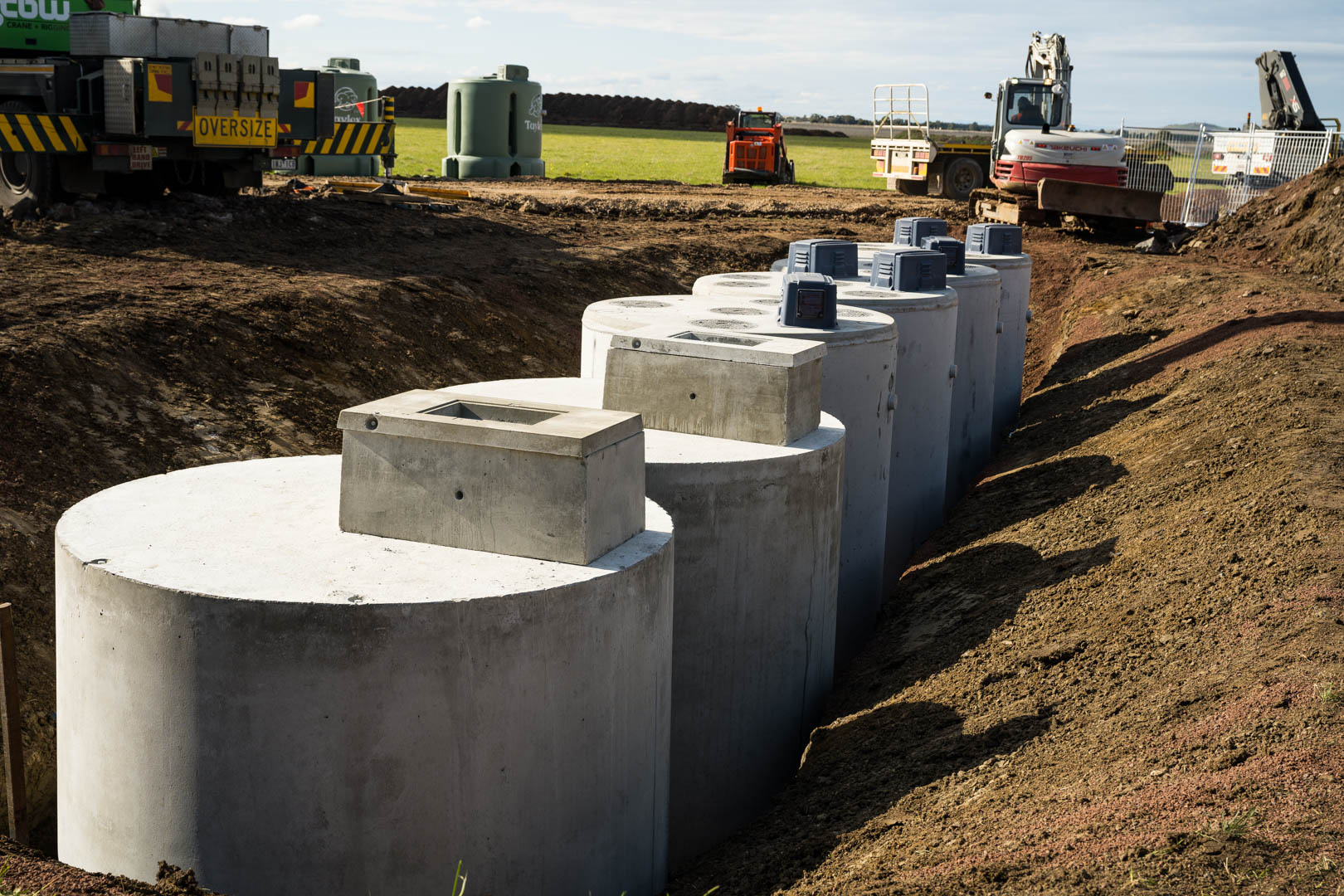If your property cannot connect to the sewer network, then you will need to install a system that will treat and dispose of all your wastewater onsite, which is called an onsite wastewater management system, commonly known as a septic system.
There are several types of domestic septic systems, which are typically installed on residential properties, or small offices. They are designed to treat up to 2,000L of wastewater per day. Click here for more information on these types of systems, including the septic permit process through your local council.
Any septic system that manages more than 2,000L of wastewater per day, is classified as a commercial septic system.
The approval process for commercial septic systems varies, depending on the expected Daily Hydraulic Load (DHL) for your business, which is the volume of wastewater that will enter your septic system each day (especially on peak days).
If the DHL of your business is expected to be up to 5,000L, then you will need to install a ‘small commercial’ septic system, and approvals for your system will be obtained through the health department of your local council.
If the DHL of your business is expected to be greater than 5,000L, then you will need to install a ‘large commercial’ septic system and you will need to apply for a works approval through the Environment Protection Authority (EPA) Victoria. Please click here for more information on the EPA works approval process.
So how do I calculate my Daily Hydraulic Load (DHL)?
The first thing you need to calculate (or engage someone to calculate) is the DHL of your business. And that includes the DHL of your PEAK demand. For example, if you are a sports recreational venue and you calculate your business is visited by 50 people per day Monday to Friday and then 250 people on Saturday and Sunday, then your system needs to be able to cope with a DHL for 250 people.
The DHL is calculated differently for different types of businesses. For example, the DHL of a hotel, which has toilets, showers, baths, kitchens (with lots of grease and oils), etc will be calculated differently from that of an office, which is typically just toilets and maybe one shower and a small kitchen.
What else do I need to know?
If your business deals with food or other organic matter, you will also need to calculate the capacity of the septic system to deal with high and/or irregular organic loadings. Such businesses may include hotels, motels, guesthouses, bed and breakfast establishments, restaurants, cafes, wineries, poultry farms, mushroom farms, cheese factories, take-away food premises, shops, schools, toilet amenity blocks, childcare centres, reception centres, conference centres, nursing homes, hospitals, environment centres, sports centres, community halls and public recreational areas.
Septic Systems Australia can help you to determine what type of system you will need and we can also obtain approvals for the designed system, either through your local council or through the EPA Victoria. Please call us on 1800 800 333 or email info@septicsystemsaustralia.com.au
